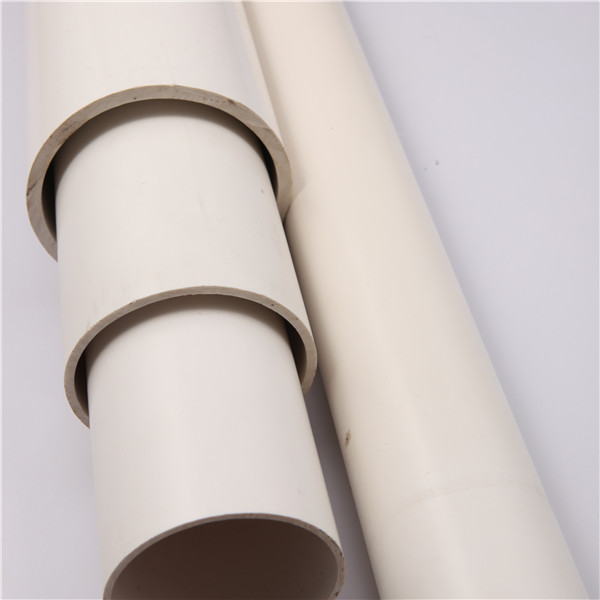Dec . 03, 2024 20:02 Back to list
Innovative Solutions for PPR Pipes and Fittings in Modern Plumbing Systems
Understanding ERA PPR Pipes and Fittings A Comprehensive Overview
In the realm of plumbing and construction, the choice of materials is paramount for ensuring durability, efficiency, and safety. Among the various materials available in the market, ERA PPR (Polypropylene Random Copolymer) pipes and fittings have gained significant traction due to their unique properties and advantages. This article explores the key features of ERA PPR pipes and fittings, their applications, and the benefits they offer.
What are PPR Pipes?
PPR pipes are made from a type of thermoplastic polymer known for its high resistance to temperature and pressure. The term 'random copolymer' refers to the specific composition of the material, which allows for greater flexibility and enhanced performance compared to other types of plastics. ERA, a recognized brand in the industry, has embraced this innovative material to produce high-quality PPR pipes and fittings suitable for various applications, including hot and cold water supply systems.
Key Features of ERA PPR Pipes
1. Durability One of the standout features of ERA PPR pipes is their remarkable durability. They are resistant to corrosion and scaling, which significantly extends their lifespan compared to metal counterparts. This makes them an ideal choice for both indoor and outdoor plumbing systems.
2. Temperature Resistance ERA PPR pipes can withstand temperatures up to 95 degrees Celsius, making them suitable for hot water applications. This resistance to thermal degradation ensures a reliable performance in conditions where conventional pipes may fail.
3. Chemical Resistance PPR is inert to a wide range of chemicals, which means it won’t react negatively to different substances it may come into contact with during its service life. This characteristic is particularly beneficial in industrial applications where pipes may be subjected to harsh chemicals.
4. Lightweight and Easy to Handle Unlike metal pipes, ERA PPR pipes are lightweight, making them easy to transport and install. This can significantly reduce labor costs and installation time in construction projects.
5. Eco-Friendly Being recyclable, PPR pipes align with sustainable construction practices. The use of PPR contributes to a reduction in environmental impact, an increasingly important consideration in modern engineering and building solutions.
Applications of ERA PPR Pipes and Fittings
ERA PPR pipes and fittings are versatile and can be used in a variety of applications
era ppr pipes and fittings

- Residential Plumbing Ideal for both hot and cold water supply systems, ERA PPR pipes are commonly used in bathrooms, kitchens, and other domestic settings.
- Industrial Applications Due to their chemical resistance, these pipes are often employed in factories and commercial settings, handling fluids that might otherwise corrode or damage traditional piping systems
.- Heating Systems Their high-temperature resilience makes them suitable for use in heating systems, including underfloor heating and radiator connections.
- Transportation of Potable Water ERA PPR pipes are safe for transporting drinking water due to their non-toxic nature, making them an excellent choice for municipal water supply systems.
Benefits of Using ERA PPR Pipes and Fittings
The adoption of ERA PPR pipes and fittings offers several compelling benefits
1. Cost-Effectiveness Despite a slightly higher initial investment, the long-term savings on maintenance and replacement make PPR pipes a cost-effective solution.
2. Improved Performance The combination of strength, flexibility, and heat resistance leads to fewer leaks and failures over time, enhancing the overall performance of plumbing systems.
3. Reduced Noise Levels PPR pipes can reduce water flow noise, creating a quieter environment in residential and commercial properties.
4. Enhanced Aesthetics Smooth surfaces and a variety of fittings and connectors allow for aesthetically pleasing installations, essential for visible plumbing in home design.
In conclusion, ERA PPR pipes and fittings represent a modern solution to traditional plumbing challenges. Their unique characteristics, combined with their range of applications, make them an increasingly popular choice among builders, contractors, and homeowners alike. As the construction industry continues to evolve, embracing durable, efficient, and sustainable materials like ERA PPR will be crucial for meeting the demands of tomorrow.
-
Durable PP Rigid Sheet: Lightweight, Chemical Resistant Solutions
NewsAug.21,2025
-
PVC Grey Sheet for Extraction: Chemical Resistant & Durable
NewsAug.19,2025
-
Durable PVC Pipe Fittings for Plumbing & Irrigation Needs
NewsAug.18,2025
-
HDPE Steel Belt Reinforced Spiral Corrugated Pipe | High Strength
NewsAug.17,2025
-
HDPE Pipe Fittings: Durable, Leak-Proof Solutions
NewsAug.16,2025
-
Premium CPVC Sheet: High-Temp & Chemical Resistant Solutions
NewsAug.15,2025

